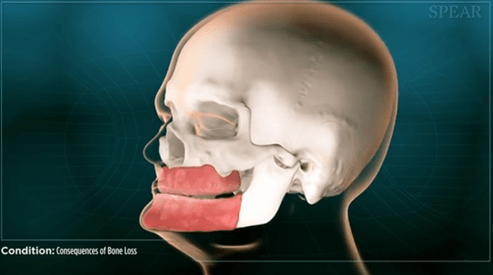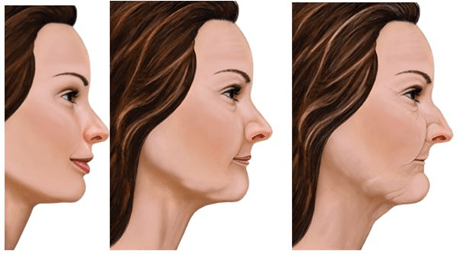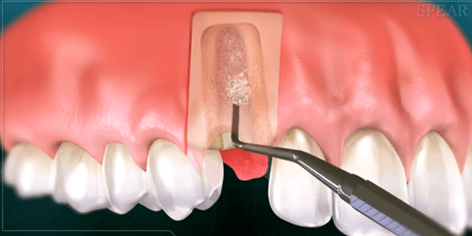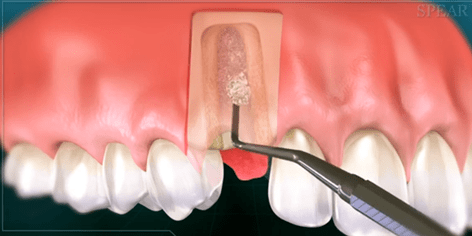What happens when I lose a tooth?
One of the most common questions I get from patients here in the Raleigh/Wake County area is: “Why would I need a bone graft after a tooth extraction?” After losing a tooth, many people do not consider the impact of that loss on the rest of their oral structures, especially their alveolar ridge. The term “alveolar ridge” refers to the thick ridge of bone containing the tooth sockets on the top and bottom of the mouth. Bone loss, a.k.a bone resorption, in the alveolar ridge area, is a common result of tooth loss, but the consequences can be severe.
A main consequence of tooth loss is resorption. Resorption involves the collapse of bone and tissue around the tooth socket. When a tooth is lost, the bone is resorbed into the body due to lack of activity, causing the surrounding teeth to drift and the bite to shift. In addition, this resorption alters the entire facial structure by shortening the space between the nose and chin, causing the appearance of thin lips and creating premature wrinkles in the collapsed mouth and jaw area.

What is ridge preservation?
Fortunately, ridge preservation is an effective procedure that prevents resorption and rebuilds the area surrounding the extraction site. Ridge preservation involves a bone grafting procedure performed after tooth extraction that prevents the progression of bone loss over time. Typically, ridge preservation is the first step in preparing to replace a missing tooth with a dental implant.
 Ridge preservation is often the first step in dental implant procedures because it is crucial that the surrounding tissue and bone at the implant site remain healthy and strong. Lack of bone caused by resorption provides a poor implant site, and implants placed in such areas often fail. Ridge preservation helps prevent implant failure by providing a strong foundation of bone and tissue in the extraction and implant placement site.
Ridge preservation is often the first step in dental implant procedures because it is crucial that the surrounding tissue and bone at the implant site remain healthy and strong. Lack of bone caused by resorption provides a poor implant site, and implants placed in such areas often fail. Ridge preservation helps prevent implant failure by providing a strong foundation of bone and tissue in the extraction and implant placement site.
The bone used in grafting may be synthetic, sterile, or from a human donor. The bone is grafted onto the extraction site and permanently solidifies into the natural bone tissue. After healing, the damaged bone will have regained its original stability and strength. At that point the ridge is no longer in danger of resorption, and new procedures, such as a dental implant to replace the missing tooth, may be safely initiated.
Have questions? Give us a call at (919) 518-8222.
|
Consequences of Bone Loss
|
Bone Regeneration (Socket Preservation)
|

For more information on this topic, listen to the Gum Guru Podcast by clicking the link below:
